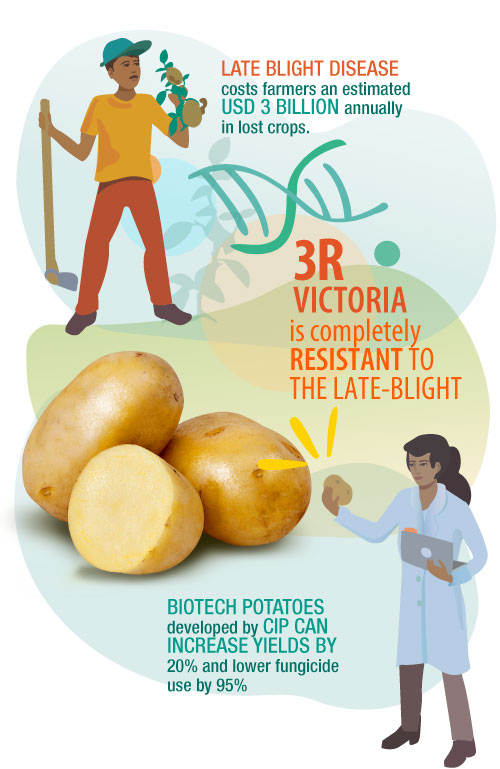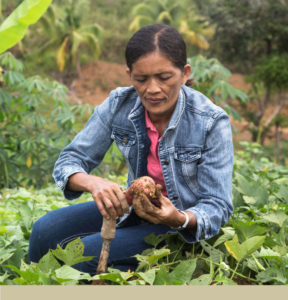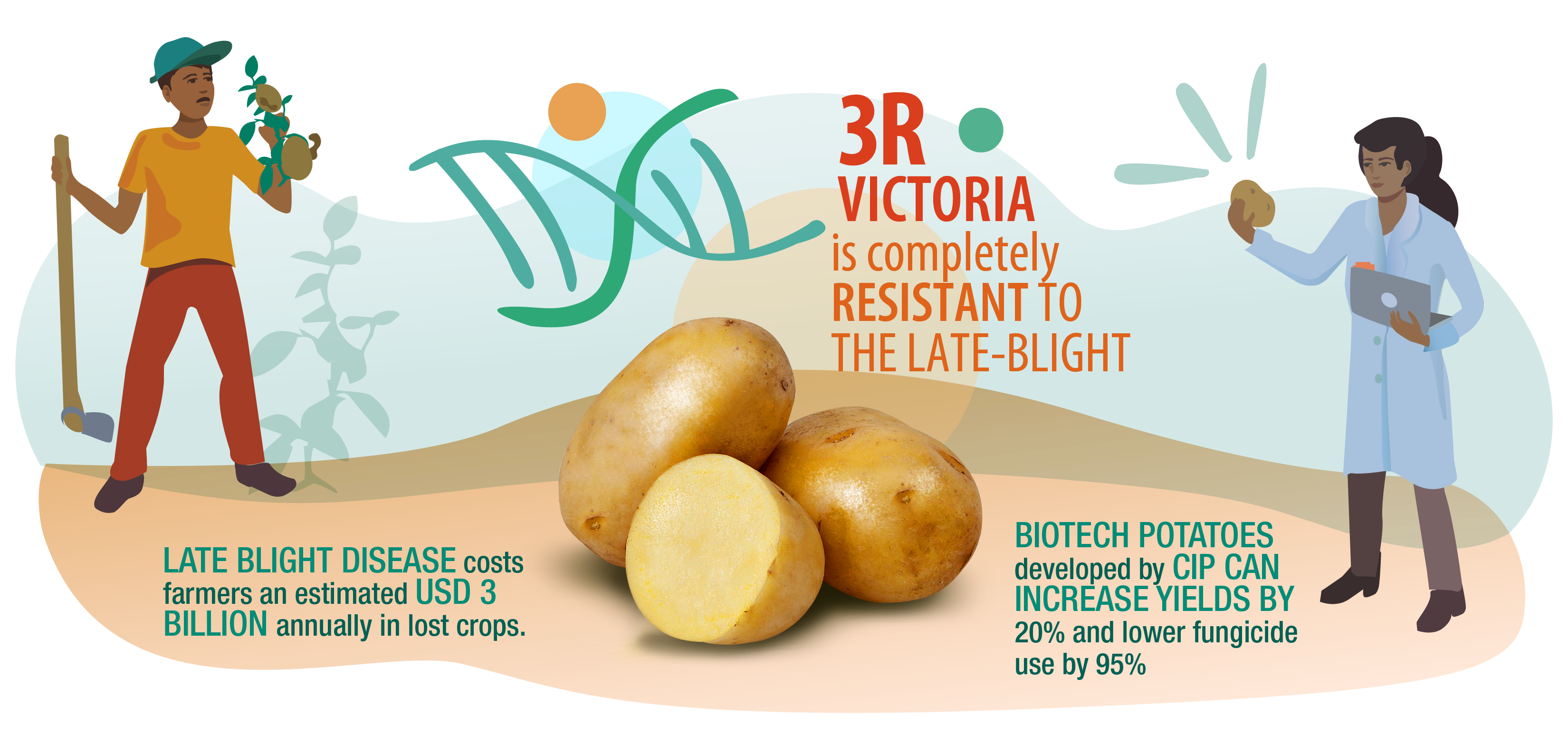INNOVATIONS
Biotech potato varieties offer complete resistance to late blight disease
- Nutrition & food security
- Poverty reduction, livelihoods & jobs
- Environmental health & biodiversity


Discourse or behavior changed
Available for use
Start date: 2008 | End date: Ongoing
Late blight disease is the number one constraint for potato farmers and has been since it caused the Irish potato famine in the 1840s. It costs farmers an estimated US$3-10 billion per year globally in crop loss and agrochemicals. The pathogen is commonly controled with regular applications of fungicides, but because their cost can represent 10 to 25 percent of the total value of a smallholder’s potato harvest in developing countries, their use significantly reduces family incomes, whereas their application poses risks to both people and the environment. Over decades, breeders have crossed potatoes with wild relatives to produce varieties with moderate resistance to late blight, but because pathogen populations eventually evolve ways to overcome their resistance, widely cultivated varieties become less resistant over time. Popular potato varieties that were late blight-resistant when they were released decades ago are now just as susceptible to the disease as any potato, which means farmers have to apply large amounts of fungicides to grow them. Nevertheless, they prefer to uncur a high agrochemical cost then to risk major crop loss, or grow a variety with little market demand.

International Potato Center (CIP) scientists thus used bioengineering to transfer 3 resistance genes (3R) from potato wild relatives into varieties that are popular with farmers and consumers in East Africa. During five years of restricted field trials in multiple locations in Uganda, these 3R varieties showed complete resistance to late blight without any fungicide applications. While other popular varieties planted in adjacent plots were destroyed by late blight, the 3R varieties produced good harvests. These 3R potato varieties, essentially fungicide-free, can increase farmers’ profit by 40% and reduce the use of agrochemicals by more than 90%. Ugandan potato experts have estimated the adoption rate 15 years after release will be 40-50 percent.
CIP and partners produced a dossier documenting the results of several years of field trials and a safey assessment of the 3R potato as part of a petition for registration and national performance trials, the last prerequisite for releasing the variety to farmers. Once this petition is approved, CIP’s partners will begin commercialization of the new variety.
International Fund for Agricultural Development; European Union; Australian Centre for International Agricultural Research (ACIAR); OPEC Fund for International Development (OFID).
CGIAR Research Program on Roots, Tubers and Bananas; International Food Policy Research Institute (IFPRI); Kenya Agricultural and Livestock Research Organization (KALRO); National Agricultural Research Organisation (NARO); and Ethiopian Institute of Agricultural Research (EIAR).






